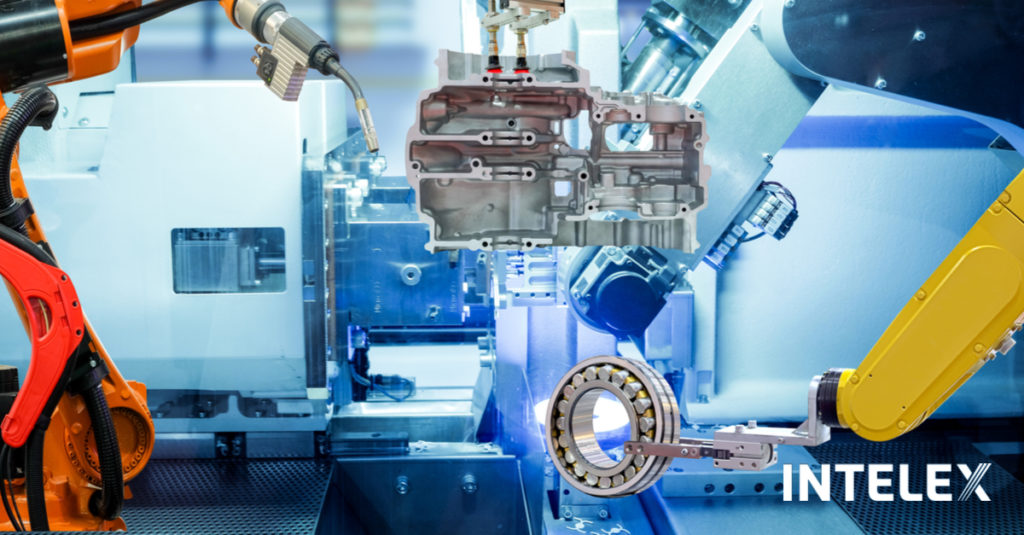How Quality 4.0 is Changing the Future of Business: Part II
January 21, 2021

In our previous blog on Quality 4.0, we introduced the ways in which the principles of Industry 4.0 have impacted the practice of quality. In today’s blog, we’ll look at the first of a series of case studies to see how this revolution plays out in today’s organizations.
Maintenance 4.0
Equipment failure in a manufacturing environment can disrupt cash flow and productivity. Not only do machine repairs cost money and time to repair, but there is also a cost to sitting idle. Time and money are lost through decreased productivity and missed deadlines, while rushed work (for example, immediately after recovery from the failures) can lead to additional product defects or safety hazards. While traditional maintenance techniques react to machine failures only after they occur, Maintenance 4.0 offers the opportunity to collect data to predict and prevent machine downtime before it occurs, potentially protecting millions of dollars of productivity and labor. The intelligence and predictive nature of Maintenance 4.0 makes it part of Quality 4.0. (Lee, 2019)
Many organizations currently use production scheduling software for scheduled maintenance. However, unpredicted production line events can cause serious disruption to these systems. Industry 4.0 technology such as IIoT and AI could prevent these disruptions by collecting a steady stream of data to allow data-driven, autonomous decision-making regarding machine maintenance.
In the manufacturing industry, data accumulates from a variety of sources (Yan, 2017), including product and machine design, machine operation, staff behavior, environmental conditions, logistics, and customer feedback. In the past, this data was collected manually by human workers, analyzed using traditional statistical methods, and acted upon as time and budget permitted. Today’s smart manufacturing systems will collect the data from sources across the production environment to determine remaining useful life (RUL) of equipment and systems, information that can be used to prevent accidents and machine downtime. (Lee, 2019).
Maintenance 4.0 uses technology to create entirely new maintenance practices, including:
- interoperability between machines, data, and people connected by IIoT devices
- simulating new processes using virtual twins (before they are committed to with physical components)
- enhanced decision-making for technical assistance by augmented human intelligence, and
- autonomous decision-making machines carrying out tasks that are dangerous or impractical for human workers. (Adhikari et al, 2019)
Al-Najjar et al (2018) propose that a Maintenance 4.0 system must meet the demands of Industry 4.0:
- It must be able to predict, detect, and diagnose abnormalities in the production system.
- It must be able to create a maintenance schedule that complements the production schedule.
- It must provide autonomous self-maintenance.
- It must provide quick and efficient maintenance with short time to completion of repairs.
- It must produce real-time data analysis for predictions, diagnosis, progress, and tasks.
- It must be cost-effective and sustainable.
Lee (2019) has assembled a selection of case studies of organizations currently applying the principles of Maintenance 4.0.
| Company | Description | Application |
| Rolls-Royce | One of the world’s largest engine manufacturers. | • Uses big data for design, manufacturing, and after-sales management for predictive maintenance. • Uses nanobots for predictive maintenance and inspections. • Collects data for maintenance post-sale. |
| Hyundai Motors | One of the world’s largest car makers. | • AI Car Diagnosis System uses a Knock Sensor Detection System (KSDS) to analyze vibrations to diagnose vehicle problems with an accuracy of 87.6%. Bosch Multinational technology company • Uses software to collect data from across the production environment to visualize and analyze the current state of equipment. |
| John Deere | Agricultural Technology | • Uses predictive maintenance technology to detect potential defects before they occur. • Helps improve agricultural yield by analyzing machinery, weather, and soil using sensors and drones. • Conducts post-sale maintenance monitoring of equipment. |
| Naver | Technology Company | • Achieves predictive maintenance through use of big data analytics, smart sensors, and AI. |
Yan (2017) predicts that the future state of Maintenance 4.0 will feature data collection from the entire product lifecycle, including design, production, marketing, post-sale service, customer behaviour, and recycling. This will enable companies to design and implement an end-to-end customer experience that more effectively meets quality and performance goals.
In our next blog, we’ll look at the applications of Quality 4.0 to the supply chain.
References
Al-Najjar, B., Algabroun, H., & Jonsson, M. (2018). Maintenance 4.0 to fulfil the demands of Industry 4.0 and Factory of the Future. International Journal of Engineering Research and Applications, 8(11), 20-31.
Lee, S. M., Lee, D., & Kim, Y. S. (2019). The quality management ecosystem for predictive maintenance in the Industry 4.0 era. International Journal of Quality Innovation, 5(1), 4.
Yan, J., Meng, Y., Lu, L., & Li, L. (2017). Industrial big data in an industry 4.0 environment: Challenges, schemes, and applications for predictive maintenance. IEEE Access, 5, 23484-23491





